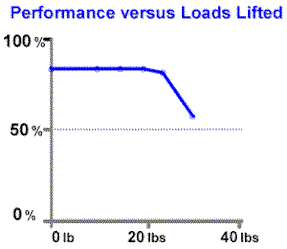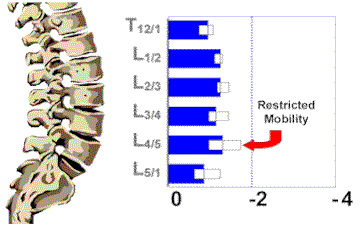|
|
|
|
|

The test was performed two years after the two-level diskectomy. The purpose of the test was to determine the extent of his impairment and to evaluate his work capacity. The patient's biomechanical performance parameters were compared to the normal values for a 35-year-old male, lifting the same loads. The overall performance, as a function of the load lifted. was evaluated. The patient has a near normal function for loads up to 25 pounds. Thereafter, there is a substantial decrease in performance. |
 The decreased performance with load is caused by biomechanical anomalies at the L4/5/S1 levels. The initial injury and subsequent surgeries has significantly restricted mobility. This restriction becomes more severe as the load lifted increases, compromising the mechanical function of the spine. |
As his biomechanical performance was good as long as the spine was not subjected to excessive stress, the patient was rated as having a partial disability. His capacity for work was restricted to light duties in accordance with the Spinex International's functional assessment.
|
|
I Home I
I Contact Us I
I Feedback I
I Search I
|